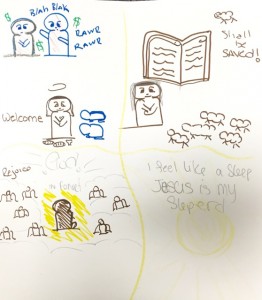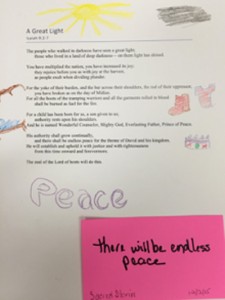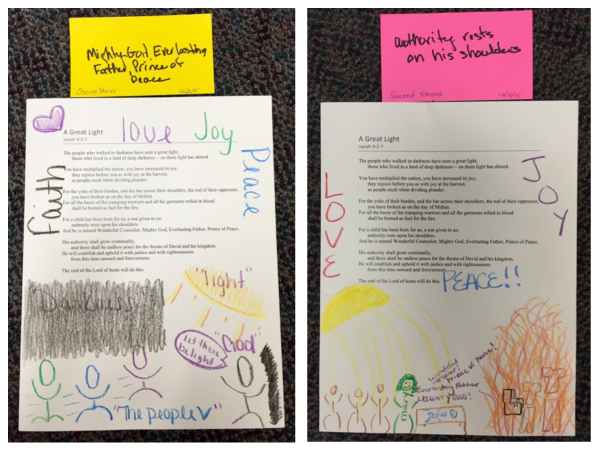
Today was the second week of our February series of circles on parables of Jesus in Luke. Last week we did the story of the Good Samaritan; this week the parable of the Lost Sheep. We included the context: Jesus’ teachable moment with self-righteous, religious folk who grumbled about him hangin’ with sinners.
We had a full group of fifteen and a lively session, especially when we used the drama bag. Someone suggested it was a body bag, but I said no, it’s a DRAMA bag. Both the drama-bag mime and the volunteer storyteller did a great job.
We passed around our illustrated book of Life in Bible Times so everyone who wanted could read a paragraph. That’s a lot more interesting then one person reading. Plus I noticed how each woman helped the next person find the place to start reading. Such a gentle experience of group care, very dear.
We read the two page spread on shepherds and sheep. There were various references to scriptures where sheep and shepherds are mentioned. I was remembering both Moses and David as shepherds.
For connections, we told “sheep stories” or whatever came to mind in thinking of sheep. There was a wonderful variety of responses. We sorted ourselves into “country girls” who had some first-hand experience of sheep growing up, to “city girls” who only knew them from afar.
Some made spiritual connections like “Lamb of God” and others connected with being like a lost sheep, found and saved by Jesus.
I told about the time a sheep bolted for the barn door between my legs. Another Circlekeeper told how when she was young, she visited family in Indiana who lived on a farm. She asked, “What are those little raisins behind the sheep?” Her cousins got a good laugh out of that.
Several mentioned various unsavory sheep characteristics like their stinky smell, stupidity, and obnoxious vocalizations. Then there was the evil-face sheep that made REALLY loud, ugly noises (somehow that was very funny). Another woman recalled a time when a sheep chased her mother on Coney Island. She didn’t know her mother could move so fast!
On the more positive side, there were reminders of the lanolin of sheep wool that makes the hands of shepherdesses so soft. And the tasty cheese that comes from sheep. Or was that goat cheese?
We could all easily find ourselves in this classic little parable–recalling times when we have been lost, not knowing which way to turn, all alone with regret about how we messed up. I encouraged us all to be confident in God’s steady determination to find us, and bring us home.
Great story; great Circle. Thank you, ladies. Thank you, Jesus.





